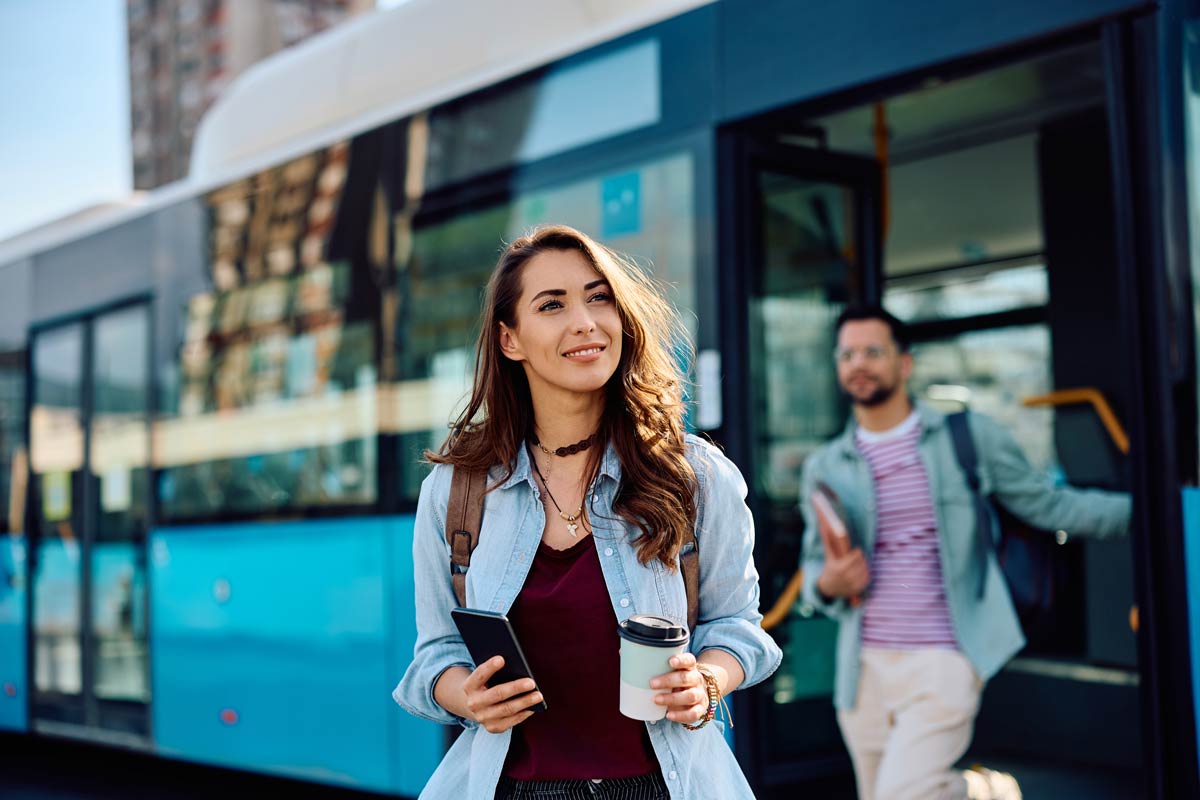A smarter ticket to ride
The passenger transport sector is thriving in the UK, and is a huge contributor to the mobility industry.
More than 4 billion passenger journeys are made by bus each year – equating to almost 11 million each day – along with 1.6 billion by rail. An additional 229 million journeys are made by tram, and 39 million by ferry. And things are about to get a whole lot more interesting for this sector. Both authorities and consumers are looking for more efficient, greener, more convenient transportation options to ease congestion and reduce emissions, as illustrated by the introduction of clean air zones in multiple cities. In the coming years, this shift is likely to result in the increasing prominence of various passenger transport modes that provide an alternative to private car use.
“Buses are a vital driver of growth, connecting communities to opportunity and delivering major economic and environmental benefits. With targeted investment, we can unlock a stronger, greener, and more inclusive future.”
— Alison Edwards
Director of Policy and External Relations, CPT
To succeed in this changing environment, transport providers will need to provide seamless, connected customer experiences, all underpinned by unified data and technology.
Changing tracks to customer experience
For transport brands, digital transformation has often focussed on operations or infrastructure management. AI, for example, is frequently used for things like crew and shift optimization, predictive maintenance, or improving energy efficiency. Now, the focus needs to expand to include customer experience.
This could include things like:

Analysing passenger preferences to optimise schedules, reduce wait times, and improve customer satisfaction.

Making individual recommendations based on the passenger’s journey history and immediate context.

Offering personalised rewards for customers travelling at quieter times, or on more sustainable transport routes.

The travel industry understands the need for exceptional customer experiences. Two-thirds (66%) of the brands that took part in our travel and hospitality research agree that, in a highly saturated market, offering a memorable customer experience has become a key differentiator. What’s more, 70% already allocate budget and resources to customer experience, and 67% have invested in related tools and technologies.
But transport providers are slow to get started with customer experience initiatives. Just 25% say they provide data-based recommendations, while only 30% offer personalised rewards. A shift towards using data and technology to deliver powerful, personalised experiences will be increasingly important as we move in the direction of smart cities.

Passenger transport moves smart cities
Smart cities enable more efficient urban management through the integration of digital technologies, and intelligent mobility is an integral part of any smart city strategy. Intelligent mobility improves efficiency by optimising traffic flows, and also has a positive impact on safety, sustainability, and social inclusion.
As cities get smarter, transport providers will need to consider things like:
- Interoperable ticketing: When one ticket can be used for journeys across multiple operators and modes of transport, customers have the flexibility to choose the optimal solution for their immediate needs.
- Data-driven recommendations: Intelligent mobility requires transport recommendations tailored to the individual based on real-time insight into journey history, cost, delays or disruptions, weather conditions, and emissions.
- Last-mile mobility: Effectively integrating passenger transport options like buses, trains, and trams with micro-mobility solutions like e-scooters can improve accessibility to public transport.
- Inclusivity: Accessibility and network coverage must be designed to ensure access to mobility for all – including those who are limited for financial or physical reasons – to avoid transportation poverty.
- Biometric authentication: Technologies like fingerprint, voice, or facial recognition, that quickly verify a passenger’s identity, can be used to improve security as well as passenger flows.

There are plenty of digital tools available to support smart infrastructure needs, often leveraging the latest AI and automation technologies. But these need to be properly integrated, and fed with accurate data to ensure effective decision making.
There are already examples of smart city transportation systems in action. Zurich – often cited as the archetypal smart city – has an integrated network of trams, buses, trains, and e-scooters, all accessible via the Zürcher Verkehrsverbund (ZVV) app. Via the app, users can seamlessly plan journeys across different transport modes, purchase tickets, and access real-time updates.
London is moving in a similar direction with Transport for London’s TfL Go app, which enables users to view live arrival times, understand how busy stations are, access their journey and fare history, use contactless Oyster accounts, and easily request refunds. masterclasses for foodies.
“By providing up-to-date information on their journeys, as well as detailed real-time accessibility information, we can help make it easier for customers to move around the city.”
— Emma Strain
Customer Director at Transport for London
How transport providers can put their data to work
Here are three steps transport providers can take to connect, realise, and maximise the power and potential of their data and technology:
Step one: Align martech with customer experience
The majority (63%) of travel and hospitality brands see their use of marketing technology (martech) as mostly operational, rather than being a central part of the customer experience, according to our research. This needs to change.
To deliver seamless, connected passenger experiences, transport brands will need to fully align their martech strategies with their customer experiences strategies. A trusted services partner can help transport brands to create a martech strategy, as well as evaluate their current tech stack, integrate and optimise any recommended additions, and ensure they’re collecting the right data to meet their customer experience goals.
Step two: Create a unified data foundation
Transport brands have a wealth of passenger information including transactions, interactions with websites or mobile apps, and passenger survey responses. But this information is often stored in disjointed systems that don’t communicate with one another.
With a data platform, transport brands can unify their own first-party data across all these separate systems. And identity resolution will ensure they can recognize the passenger across any channel or device, creating a single source of customer truth.
Step three: Enrich and expand the data foundation
Using data hygiene services, transport brands can make sure their first-party data is accurate and complete. They can enrich it with high-quality, ethically sourced third-party data to create a 360-degree passenger view using demographic, lifestyle, and predictive behavioral information. Transport brands can also collaborate with partner brands, using data clean room technology to securely share insights about their customer base. And they can expand their reach using customised audiences or pre-built audience data packages.

Success story: South Western Railway creates a 360-degree customer view
Following the COVID-19 pandemic, South Western Railway needed to engage returning travellers with relevant products and services. But its customer data resided in multiple, disconnected systems, making it difficult to use for marketing efforts.
Acxiom and technology partner Tealium created a best-of-breed Customer Data Platform (CDP) to consolidate data from various siloed systems. When combined with Acxiom integrated services – including identity resolution and data enrichment – this resulted in a single, holistic 360-degree customer view.
Paid media campaigns based on this customer insight resulted in:
-
Sales revenue vs. target
-
ROI

Next stop: Data-driven experiences
With a martech strategy that’s fully aligned to the customer experience, and a comprehensive data foundation that can feed effective decision making, transport providers will be ahead of schedule as the country moves towards more efficient, green, convenient transportation options.
By putting data and technology to work, transportation providers can deliver the connected, personalised experiences their passengers expect in this rapidly evolving environment.
